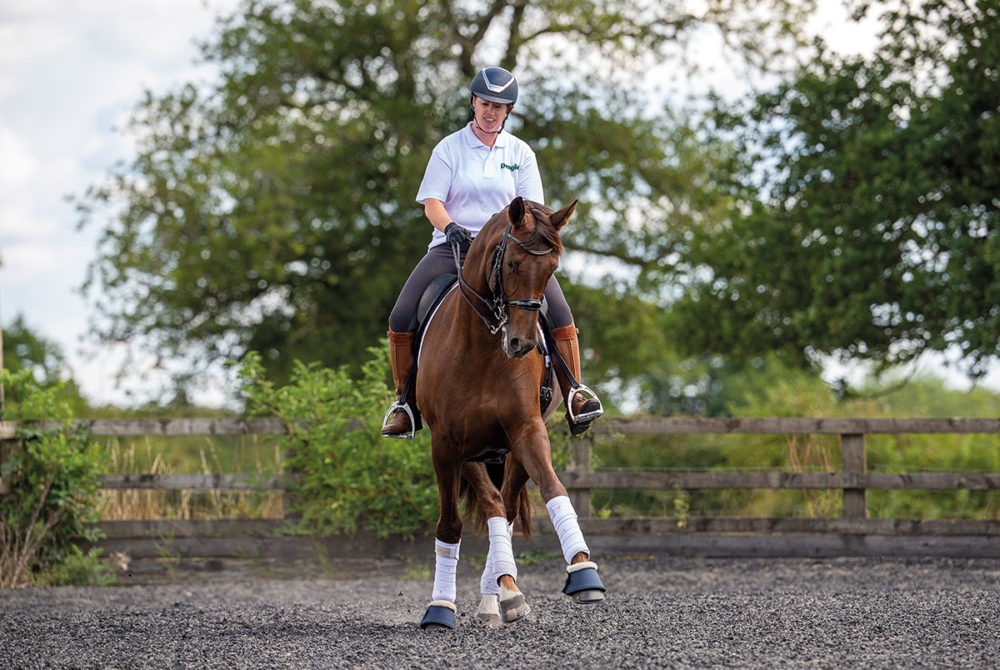Alice Oppenheimer’s guide to travers and half-pass
Posted 1st February 2021
Whether you’re stepping up a level or simply looking to freshen up tired schooling routines, Alice Oppenheimer’s hassle-free guide includes the perfect movements to give your flatwork a welcome boost

With leg-yield and shoulder-in feeling easier by the day, you might be wondering where you and your horse can go from here. Lateral work’s now a firm friend, so you might be keen to up the ante and look for new ways to challenge yourself.
That’s where travers and half-pass come in. These tough-to-tackle – but perfectly doable – movements might feel like the pinnacle of lateral work, but there’s no reason you can’t introduce them into your schooling sessions at home and reap their many benefits, whether that’s improving your horse’s suppleness or lightening his forehand.
Getting going
Suppleness is the name of the game when it comes to travers and half-pass, which means it’s also the key to a good warm-up. Incorporate changes of bend to loosen up your horse, encouraging him to work evenly into both reins. Make sure he’s supple in both directions and take note of which side he finds easier, as it can help to begin each movement on his better rein.
Be sure to include some easier lateral work in your warm-up, too. Leg-yield and shoulder-in will have your horse thinking about going sideways – and set you up well for half-pass – before you try some trickier exercises. It’ll also give you the opportunity to make sure he’s listening to your leg aids and able to clearly distinguish between aids for forwards and sideways movement.
Teaching travers
Sometimes called quarters- or haunches-in, travers requires your horse to work on four tracks with his shoulders on the outside track and quarters to the inside at approximately a 35° angle. Your horse’s outside hindleg will cross in front of his inside, and he should bend towards the direction in which he’s moving.
Travers is introduced at Medium level, but in training it can improve your horse’s suppleness, lighten his forehand and develop his ability to engage his hindquarters. It’s the foundation for teaching half-pass and canter pirouettes, too. Travers requires your horse to move into the bend rather than away from it (like he would in leg-yield) making it a tougher exercise to crack.
Get to grips with half-pass
Another Medium level movement, half-pass is travers on a diagonal line so, once you’ve mastered this, half-pass is a great way to progress your lateral work without feeling unachievable. Half-pass requires your horse to move forwards and sideways while travelling in the direction of bend. His forehand should be slightly ahead of his quarters with an equal bend throughout his body. He should flow across the arena smoothly on the diagonal line.
Find out how to ride these two suppling movements in Spring Horse&Rider, on sale 4 February 2021.










